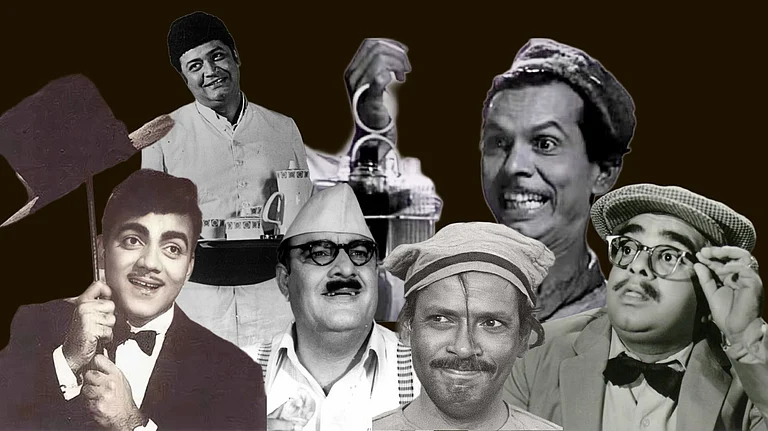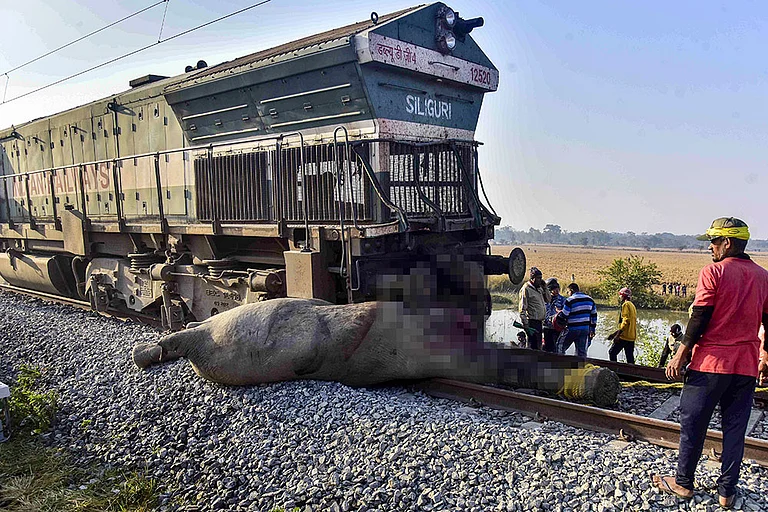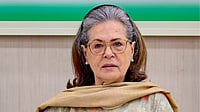THOSE who are missing the familiar chills and thrills of the February budget, pine not. For the Ides of March are here. And we're not referring to the "interim budget" that is scheduled for unfolding this month—that's just a glamourous synonym for a quick disposal of the government's balancesheet for 1997-98. We are talking of the year that slipped by, along with a host of wasted opportunities. We're here to sing a paean to the dream budget that turned sour, the miracle that never was.
Exhorts a top-level finance ministry official: "It's clear that we've failed to control our expenditure. It's clear that there's a problem on the growth front, leading to major slippages in revenues. But it's also true that we didn't have a government for a good part of the year. You cannot judge economic performance only in terms of annual budget targets." Adds Dr Jairam Ramesh, former Man Friday to Finance Minister P. Chidambaram: "The budget was predicated on a 7 per cent GDP growth and an 8 per cent industrial growth, none of which happened. The problem was compounded by poor foreign trade and agricultural output, and of course, the fall of the government. We didn't have enough time to pursue the reforms."
100 per cent peace of mind?
It was probably a classic case of too many expectations chasing too little action. One of the most ambitious in recent history, the 1997-98 budget—which came to be known as the "Chidambaram Budget"—marked a major break from the past in an area closest to the middle-class heart—taxes. In a few strokes, Chidambaram broke up the direct tax structure, simplified and reduced it and placed a string of carrots to convince people that paying taxes was a patriotic duty. Says Ramesh: "The fundamental vision of the budget was that low tax rates would lead to better collection rates and much improved compliance. Our objective is to double the number of taxpayers by the turn of the century to 25 million. To that extent, the budget is a success."
At a closer look, however, PC's biggest gamble may have backfired in a curious way. The 16 per cent rise in the 97-98 target for gross tax revenues had banked heavily on direct taxes, expecting as much as 17 per cent growth in income and corporate taxes. Compared to that, indirect taxes, mainly customs and excise, were to grow at 14 per cent, especially with the many reliefs granted in the budget.The direct taxes growth was to come from two areas: wider tax base and the amnesty scheme for black income. Stands to reason, because income tax collections had been stagnating for quite a while and there was no better way to jolt the revenues upwards.
As a result, says the finance ministry, the "bonanza" from the Voluntary Disclosure of Income Scheme, had been budgeted within that growth. The government fought shy of putting a figure to VDIS collections because, one, it was unsure of the extent of its success—the first suggestion had come, ironically, from the veteran Left leader Jyoti Basu but former finance minister Manmohan Singh had been resisting such a scheme for years. Secondly, since 70 per cent of this money was to go to the states—how else to get the states' compliance?—the actual flow into the central coffer was not expected to be much.
Contrary to expectations, VDIS netted above Rs 10,000 crore. But thanks to the economy, direct taxes moved slow and the lower slabs meant less money came to be actually collected. Meanwhile, exports were down in the dumps and the much-awaited industrial recovery didn't take place even in the second quarter, hitting both income tax and excise collections. To add to the woes, oil prices came to stagnate at historic lows leading to a cheaper import bill and destabilising a major source of customs revenues for the government. In fact, keeping pace with industrial growth, excise collection has gone up by only around five per cent instead of the targeted 12 per cent. As for customs, growth has stagnated, though in terms of current rupee value, the monetary targets may well be met at the end of the fiscal year.
Says Dr Amit Mitra, secretary-general, FICCI: "While real growth is slower, I think some of the tax targets could well be met. Services tax, which are easily collectible, and income tax, which has certainly met with better response. But the downsides are customs, excise, states' sales tax and octroi. The only recourse open to the government to partly recompensate the shortfall is to cut down on capital expenditure, specifically for social sectors." That could well be since the only other source of income for the government, public sector disinvestment, failed to take off for the second year in a row, pocketing only Rs 900 crore thanks to MTNL. The budget target was around Rs 5,000 crore. Says the ministry official: "We were ready with the plans but the capital market conditions remained depressed."
And probably because the government wasn't expecting the income crunch, it went on a splurge. The pay commission awards are to take up an unbudgeted Rs 7,100 crore. Says the finance ministry offi-cial: "It is by now well-known that the pay commission was a historic blunder. We shouldn't have allowed it. True, we have failed in expenditure management but the fiscal situation has not been allowed to spin out of control." Still, the government can manage to manipulate the revenue deficit, thanks to the plan to retain the entire VDIS money at the centre and postponement of Tenth Finance Commission devolu-tion promised in the budget—the last needs a constitutional amendment to take effect. These are the short-term gains of a short-lived government!
Also, says Dr Shubhasis Gangopadhyay, ISI professor: "If the numerator and denominator are the same, the fiscal deficit target may not be affected much." In other words, if all the targets—for instance, both revenue collections and expenditure—had been based on a seven per cent GDP growth, a reduced target of five per cent may push back the rest in the same proportion. In absolute terms, of course, the overall fiscal deficit figure stands reduced, so the pressure would seem more.
But the fiscal situation will be in trouble with a capital T. And the government is helpless. True, targets are rarely made to be met by governments, but the extent of breach in the fiscal deficit target may be especially large this year. Compared to 4 per cent expected by PC, the actual may be around 5.5 to 6 per cent of GDP. And that's something which the foreign investors will not like, not to speak of the global rating agencies and foreign financiers, including the World Bank and the IMF, nicknamed "It Means Fiscal" by splurging nations.
Political stability or reform instability: Is this the price the economy is paying for having a consensus government? Says Ramesh: "When we had the first budget in July, 1996, we certainly didn't know that Deve Gowda wouldn't stay, and then even the government would fall. We couldn't carry forward our reforms. Especially the areas that needed legal changes and fundamental changes. Our failure to address fundamental issues—insurance, PSUs, banking—are all linked to the extreme right and the extreme left." For instance, it took 14 months for the restructuring of the petroleum administered price mechanism (APM) to take effect. Or, over five months to make the Insurance Regulatory Authority statutory. Take the slew of bills—on foreign exchange, companies, sick industries, small sector, financial reform—still pending before a Parliament that gave little time to the economy. But how can a consensus government not be aware of its political limitations? At the end of the year, it's execution, not good intentions, that carries the day.
THE finance ministry is quick to list its successes. "We have had a lot of forward movement—in reducing external debt by $1 billion in the last four years, in attracting private investment in infrastructure like power and telecom, in deregulation of oil prices, in forex reserves and in the ability to avert an East Asian type crisis. The rupee was well managed." But, industry claims, what was badly needed last year was a kickstart. Says Mitra: "We had repeatedly asked for a one-time expenditure in infrastructure which would have resulted in an accelerator effect. Industry was ready with the capacity due to stagnant demand and would have responded very well. But the fiscal conservatism shown by the government, especially after the Asian crisis, shows that more than an expenditure pressure, the government bowed to political pressure."
In fact, the low growth and inflation suggests that there is a liquidity overhang in the system. At 16 per cent, money supply growth is satisfactory and forex reserves at $27 billion is considered to be more than adequate (reserves should be enough to finance six to eight months of essential imports). But banks want to fund only sound projects, and with good reason.
Conservatism has actually made them halve their bad debts in the last three years. Says the finance ministry official: "The East Asian crisis has vindicated our stand—to wait and watch on capital convertibility of the rupee." When reforms begin to hurt, even banks can teach corporates a few lessons in cash management. Says Ramesh: "Indian industry is still driven by the profit margin approach while the world is geared towards the market share approach." Adds Gangopadhyay: "The budget is not made for the Bombay Club. It is nothing more than a statement of accounts and should remain so without any pretensions."
Historically, in India, the finance minister's major triumph lies in presenting path-breaking budgets. Manmohan Singh's 1991 budget, for instance, has been etched in public memory as the one that brought back India from the jaws of the wolf, namely selling of gold and IMF loans, and made seven per cent growth attainable. Unfortunately, few remember how it had hurt the first time when the reforms had actually started in the late '80s. Since then, the government has been less keen to present back-breaking policies even though, as Ramesh says, "reforms without tears is impossible. We are entering a hard phase of two-three years." All the more reason to restart the process. Says Rashad Kaldany, director, Asia II, International Finance Corporation, World Bank private financing arm: "We don't attach any importance to the credit rating agencies, but there's a feeling that the reforms have halted and the political instability hasn't helped."
Come 1998-99, therefore, the government faces an unenviable task. A sum of roughly Rs 12,000 crore is pending disbursal to the states. And there's no VDIS bonanza. There's also the much-awaited PDS restructuring which will probably take up more food subsidy once the true beneficiaries, now bypassed, are identified. And the list of pending jobs is lengthening. Says Mitra: "We need to have some radical breaks, like government investment in social sector projects and construction, 51 per cent divestment in PSUs, 100 per cent insurance privatisa-tion with probably 51 per cent Indian ownership, indirect tax reforms, and finally, end to licensing and Inspector raj. In the last area, 38 punitive laws still exist." Says Gangopadhyay: "The government can never offload its PSUs, even in part, unless it's proposing an outright sale. Also, it will surely never get the price it's asking for. The idea should be to privatise them and make them profitable and efficient, and not to make money to fill expenditure gaps."
There's yet another reason why the government should get back to radical reforms. Its major current sources of income are fast drying up. Thanks to WTO and oil sector reform, import tariff is set to shrink. The other taxes are directly linked to the income accruing to the system, which is an offshoot of fast and steady reforms. The second option is to retire old domestic debt as fast as possible and end accretion of new debt. The best way to do so is to withdraw from all productive sectors where it's making huge losses and will continue to make losses in the prevailing system. Easier said than done, though. But that's about the range of options that faces the new FM, while the nation grows restive with the seven-year itch of reforms. If and when PC returns to his chair, he'll be rather starkly reminded that the buck stops there.


























